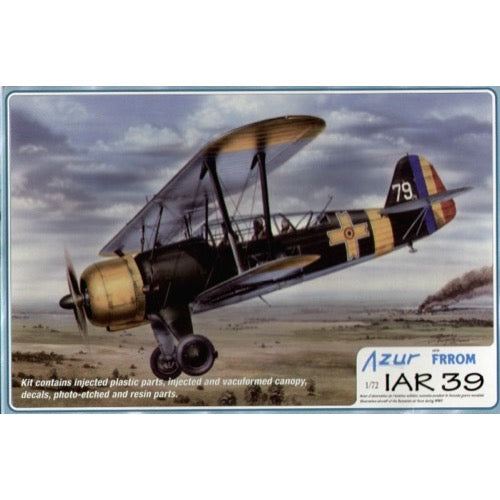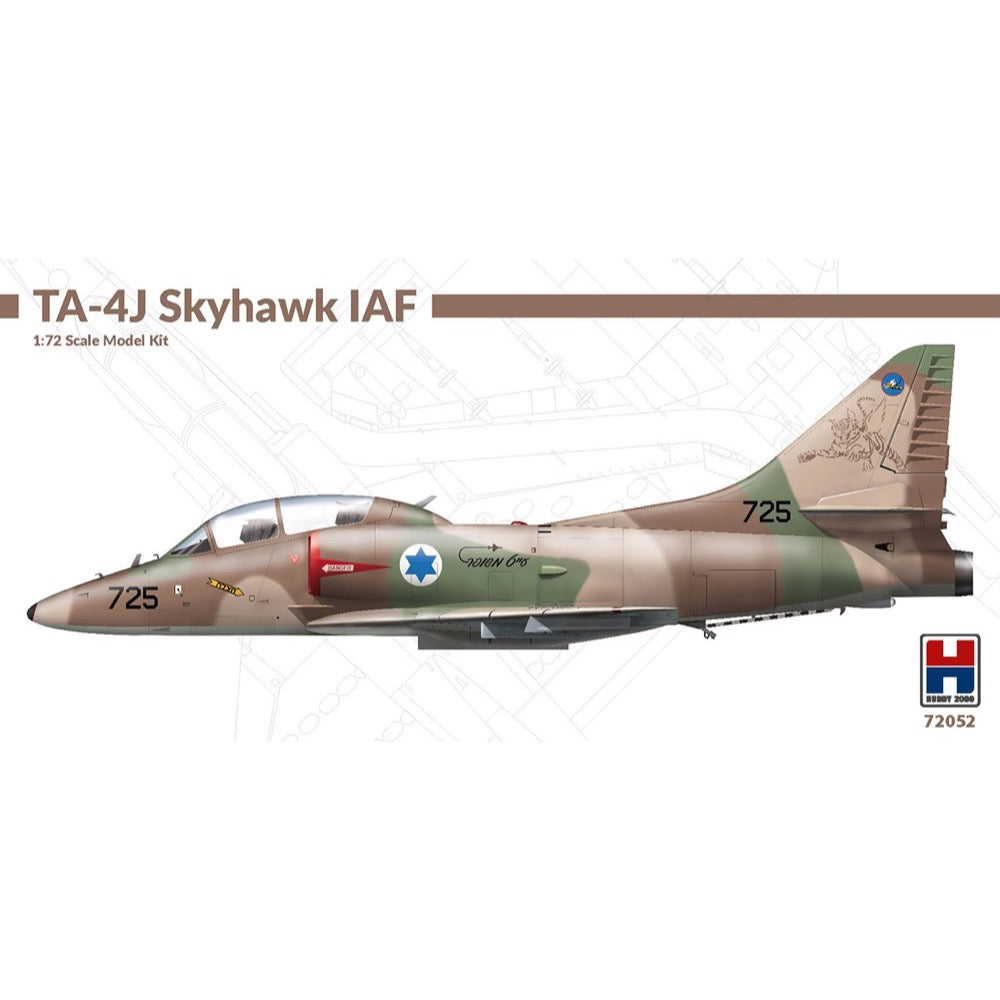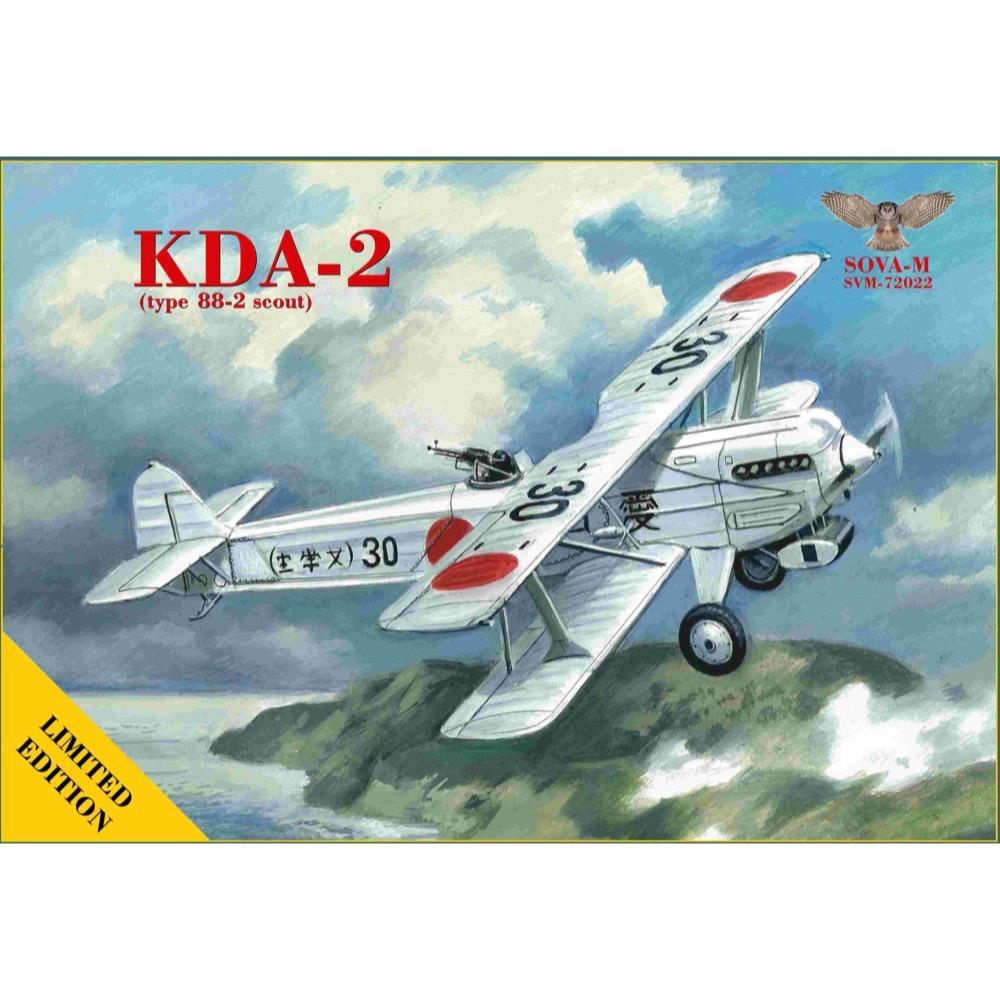
Sova-M 72022 1/72 Kawasaki KDA-2 Type 88-2 Scout
25.00
$
<h3>The Kawasaki Army Type 88 Reconnaissance Aircraft was a Japanese single-engined biplane designed for Kawasaki by Richard Vogt.</h3>
<p>Originally known by its company designation KDA-2, it was accepted by the Imperial Japanese Army as the Type 88 Reconnaissance Aircraft. The Type 88 number was designated for the year the aircraft was accepted, 2588 in the Japanese imperial year calendar, or 1928 in the Gregorian calendar.</p>
<h3>Specifications</h3>
<ul>
<li>
<p>Overall length about 171 mm, overall width about 211 mm</p>
</li>
<li>
<p>Patriot No. 30 [Schoolgirl] Decal included</p>
</li>
<li>
<p>Item Size: 31 x 21.5 x 5 cm</p>
</li>
</ul>
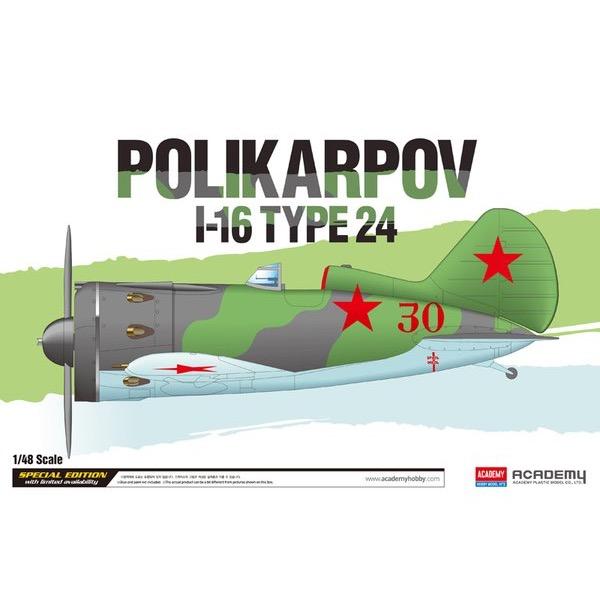
Academy 12314 1/48 Polikarpov I-16 Type 24 Le:
14.00
$
<p>The Polikarpov I-16 is a Soviet, single-engine low-wing fighter in a mixed design with a classic tail. The prototype's flight took place in 1933. The I-16 turned out to be one of the most modern fighters of that period. It had retractable wheels, modern wing geometry and the ability to change the "turn" of the propeller. At the same time, however, due to its short hull, it was very difficult to pilot and required a lot of attention from the pilot. I-16 had its baptism of fire during the Spanish Civil War, where about 500 units were delivered to the republican troops. The plane surprised the Frankists with its incredible maneuverability, firepower and speed of climb. In 1939, the I-16s was sent to China, which was fighting against Japan, and there it surprised its opponents again. Initially, the M-22 engine was used as a power unit, but on subsequent versions it was replaced with other power units, min. M-25 or M-63. The I-16 remained in the line on the Eastern Front until 1942, serving as not only a fighter, but also an attack aircraft. Technical data (version I-16 Type 24): length: 6.13m, wingspan: 9m, height: 3.25m, maximum speed: 525km / h, rate of climb: 14.7m / s, practical ceiling: 9700m, range maximum: 700km, armament: fixed - two 7.62mm SzKAS machine guns and two 20mm ShWAK cannons, suspended - up to 500 kg of bombs.</p>
<h3>Features</h3>
<ul>
<li>Accurately detailed panel lines<br>
</li>
<li>Precisely engraved cockpit, instrument panel line and landing gear<br>
</li>
<li>Various air to air rockets and machine guns<br>
</li>
<li>Includes six WWII Russian military options<br>
</li>
<li>Cartograf decals</li>
</ul>
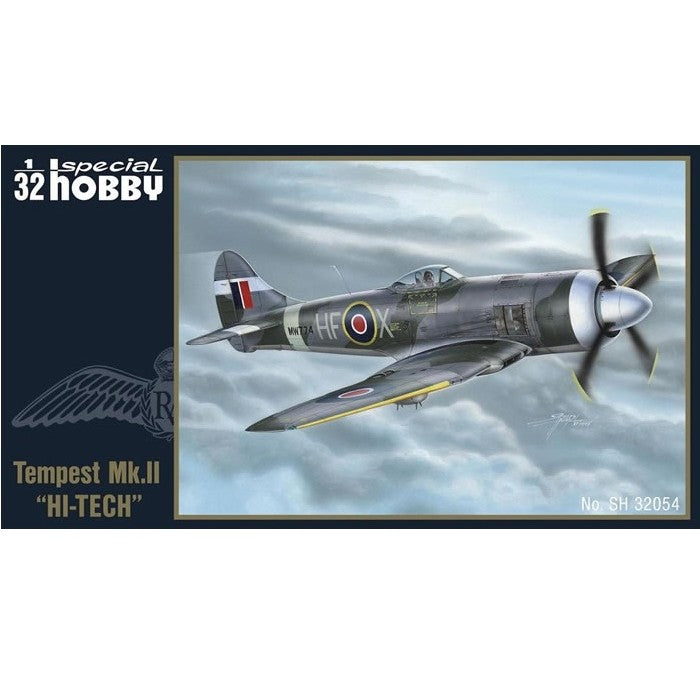
Special Hobby SH32054 1/32 Hawker Tempest MK II Hi-Tech*
75.00
$
<p>The Mk.II Tempest became the second version of the basic airframe to be put into mass production, being powered with a Centaurus radial engine. The first of two prototypes was taken aloft for the first time in June 1943, the second prototype followed in September of the same year. The flight testing did not reveal any major trouble and the RAF was excited about these new aircraft. For practical reasons given by the immediate need in the European Theatre of Operations, the Tempest V version was given priority in production though.</p>
<p>The first batches of the Tempest II did not leave the production line until October 1944 and it was expected that the first Tempest II equipped wing meant for the Tiger Force would be ready to leave for the Pacific by May 1945. The rapid development of the events of war, however, brought about a change in the situation and from the total number of 452 Tempest II airframes built as many as 300 were not delivered before the war´s end. As the RAF did not hurry to introduce the new fighter to its peace-time service, the only unit to be equipped with these machiches still in 1945 was no. 54 Sqn. In later times, there were another six combat units which operated the Tempest II fighters, these being located in Germany and India. Following the declaration of indepence of India and Pakistan, India received 85 Tempest IIs from the RAF stocks and Pakistan got another 24 airframes.</p>
<p>The Hi-Tech release of our Mk.II Tempest brings finely detailed and 3D-designed resin parts (pilot´s seat, control column, rudder pedals, throttle quadrant, cockpit floor, two styles of the main u/c wheels - with the smooth contour tyre and with a tread pattern, the tail wheel, cannon barrels and also the port wing armament bay with its loading panels open, among other detail parts the modeller may also find a PE fret with seat belt buckles, interior and exterior parts and the armament well edges, also the HGW laser-precut seat belts and a set of masks for clear parts and wheel hubs.</p>
<p>The styrene parts come on nine grey styrene sprues and one clear sprue with canopy parts. The surface of the kit features very finely engraved rivet details.</p>
<p>Comparing with the Mk.V Hi Tech release, this kit brings also the option to enrich your model with under wing rocket projectiles and their racks, the modeller may expect also the different nose parts enabling him to build this radial-engined version. The A4 size instruction sheet is printed in full colour and will meticulously guide the modeller throughout the build. There are also three decal sheets in this release with the option of five camouflage schemes, three of them wearing British colours, one is an Indian machine and the last one belonged to the Royal Pakistan Air Force. Two of the British machines are depicted as camouflaged, one of them with white identification stripes, the third British machine was painted silver dope overall. The Indian Tempest is also in aluminium finish, the Pakistani Tempest flew in desert camouflage. The decal sheets cater also for a complete set of stencilling which covers not only the exterior of the aircraft, but also interior and some stencils for the external fuel tanks.</p>
<p>Paints and glue not included.</p>
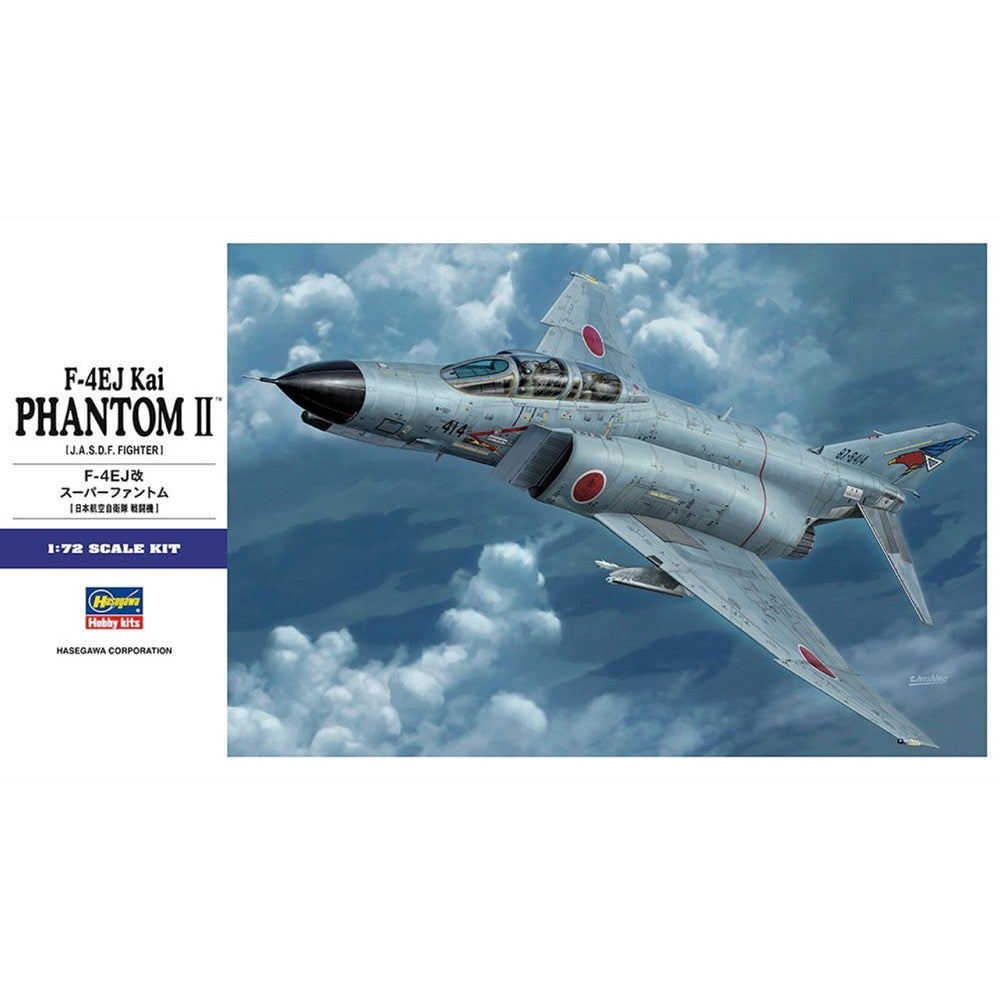
Hasegawa H01567 1/72 F-4EJ Kai Phantom Ii
19.00
$
<h3>The F-4EJ Kai is a Japan Air Self-Defense Force fighter aircraft developed from the F-4EJ Phantom II.</h3>
<p>The F-4EJ , which was selected as the successor to the F-86F in 1968 and<br>began to be deployed in 1969, has been in service for more than 20 years, so<br>research and development has been carried out since 1980 to extend the life of the aircraft and improve its capabilities.<br>As a result, a modification plan for the F-4EJ Kai was announced in February 1982.<br>This modification mainly involves improving combat capabilities and adopting the ASIP inspection method, which is a measure to extend the life of the aircraft.</p>
<p>To improve combat capabilities, the F- 4EJ was fitted with the AN/<br>APG-66J, a modified version of the Westinghouse AN/APG-66 fire control radar used on the F-16 . This radar was adopted after learning from the lessons learned from the forced landing of the MiG-25 in Hakodate, and is a small pulse-Doppler radar suited to detecting aircraft flying at low altitudes over the sea from the air.</p>
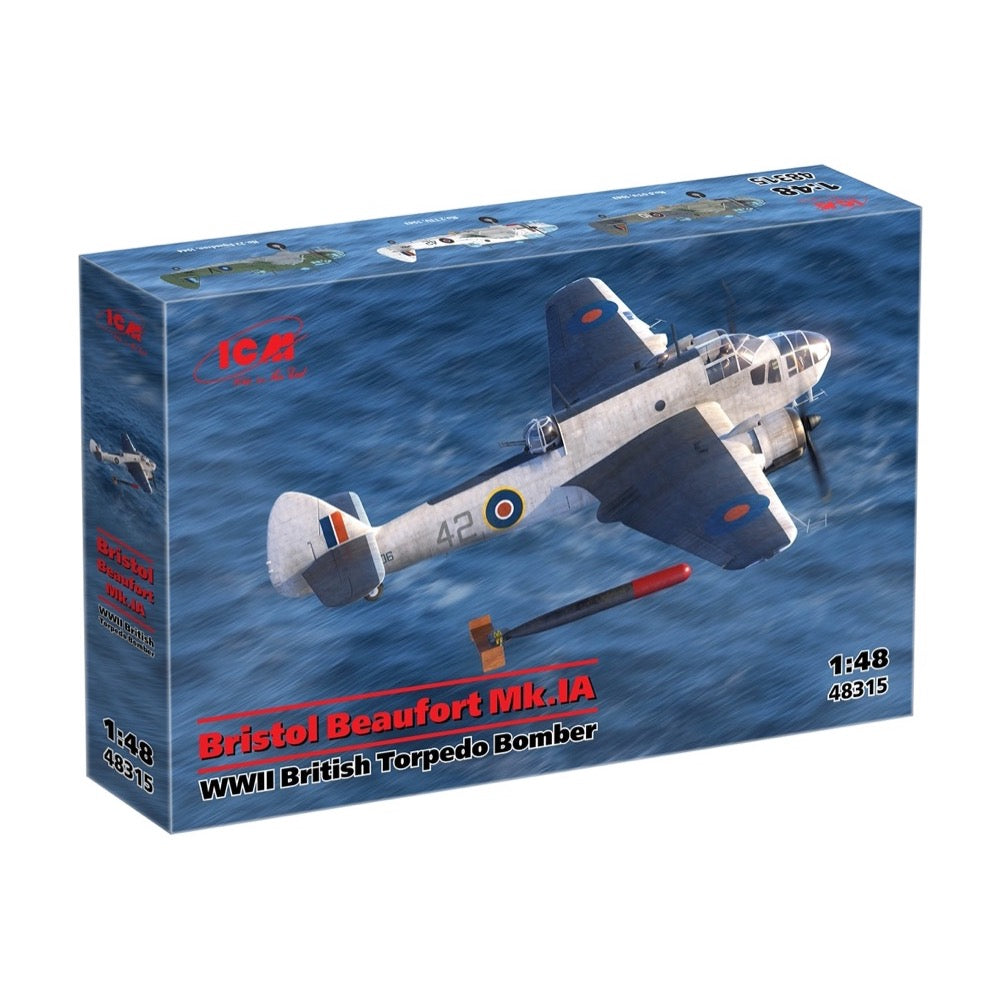
ICM 48315 1/48 Bristol Beaufort Mk.IA WWII British torpedo bomber
55.00
$
<p>The Bristol Beaufort torpedo bomber was developed by the Bristol Aeroplane Company. It was a four-seat, twin-engine aircraft with a mid-wing configuration and an all-metal structure. Its defensive armament included a rearward-facing machine gun turret for protection of the rear hemisphere, as well as machine guns mounted in the fuselage sidewalls for firing to the sides. In the nose, one or two Vickers machine guns on a movable mount could be installed for front hemisphere defense, and some aircraft also had a lower machine gun position for rearward fire.</p>
<p>From the end of 1939, the Bristol Beaufort began to be deployed with the RAF Coastal Command. The aircraft started its combat operations in April 1940, conducting air mining of sea harbors, performing daylight and nighttime torpedo attacks, and bombing coastal targets. The Mk.IA modification received a new machine gun turret, and radar systems (ASV) were installed on some torpedo bombers for ship detection. The aircraft were actively used in naval combat and bombing raids over German-occupied territory. From around 1943, most British Bristol Beauforts were primarily used for training and auxiliary roles.</p>
<h3>Markings</h3>
<ul>
<li>Bristol Beaufort Mk.IA DX135, No.5 (Coastal) Operational Training Unit , Long Kash, 1943</li>
<li>Bristol Beaufort Mk.IA LR906, No.2 Torpedo Training Unit, Castle Kennedy, September 1943</li>
<li>Bristol Beaufort Mk.IA DW816, 22 Squadron, Ceylon, April 1944</li>
</ul>
<h3>Specifications</h3>
<ul>
<li>Model size (length x width): 289 х 368 mm</li>
<li>Box size: 410 x 260 x 55 mm</li>
<li>Number of details: 240</li>
</ul>
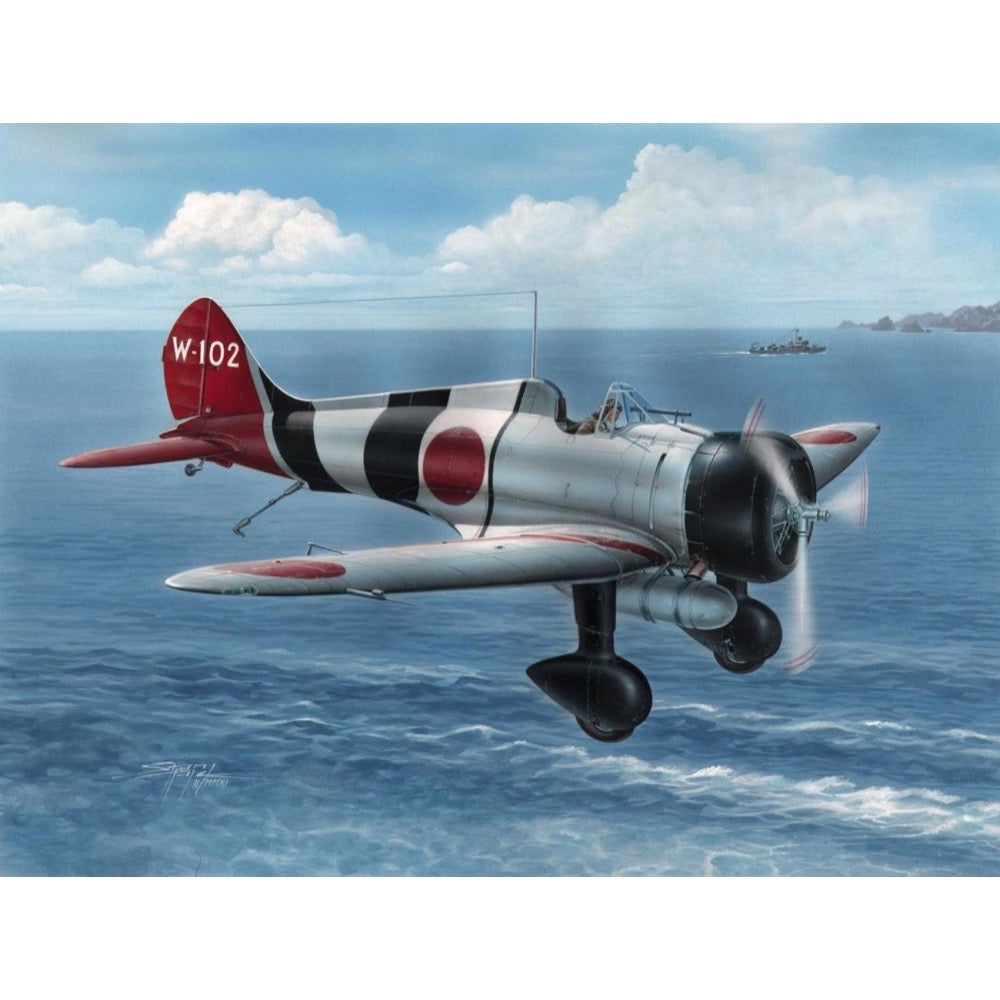
Special Hobby 1/32 A5M4 Claude Hi-Tech
46.00
$
<h3>The Mitsubishi M5A is a Japanese, single-engine fighter with a low wing structure and a metal structure from the Second World War.</h3>
<p>The Special Hobby 1/32 A5M4 Claude "Hi-Tech" is a meticulously detailed scale model kit of the iconic A5M4 Claude aircraft, renowned for its historical significance and technological advancements during its era. This "Hi-Tech" edition is designed for the discerning hobbyist, offering an unparalleled assembly experience with its precision-engineered parts and authentic detailing. Crafted to a 1/32 scale, this model provides an immersive building experience, capturing the essence and intricacies of the A5M4 Claude with exceptional accuracy. Whether for display or as a cherished addition to any collection, this kit promises to bring a piece of aviation history to life through its exquisite craftsmanship and attention to detail.</p>
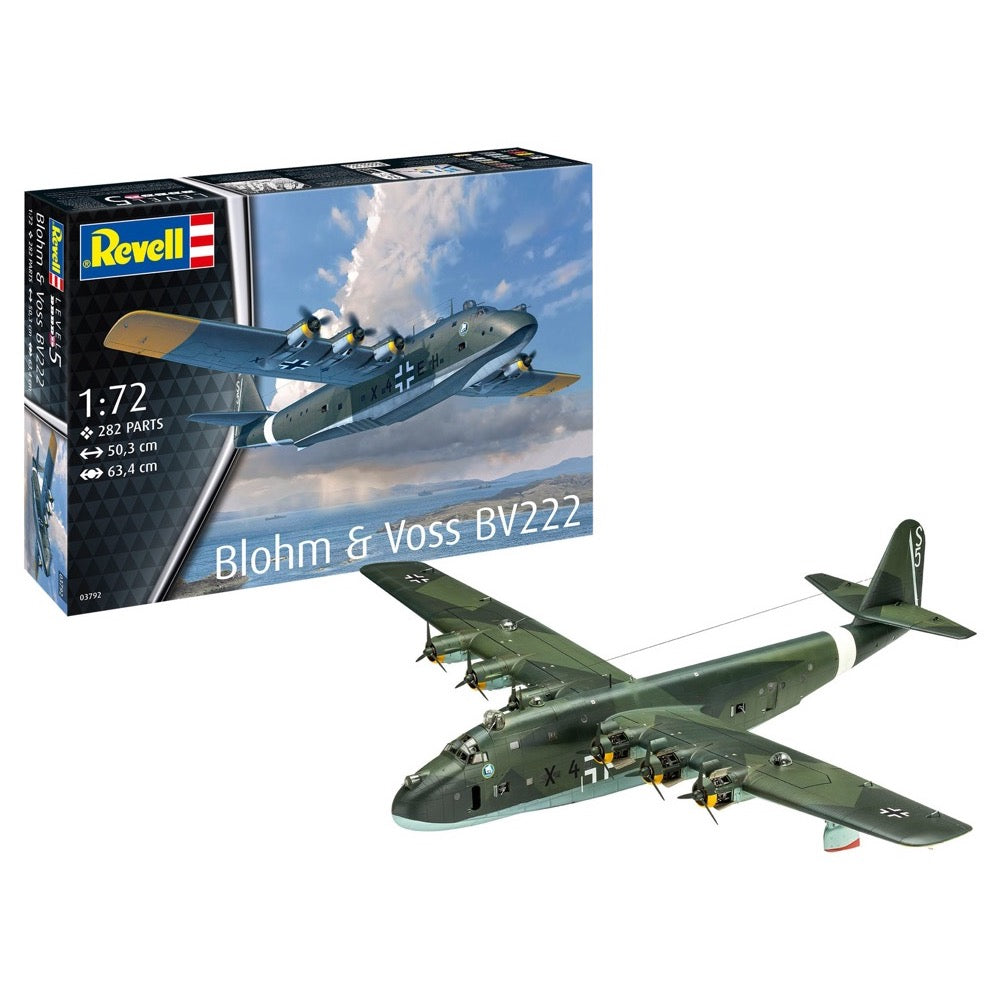
Revell 03792 1/72 Blohm and Voss BV222
46.00
$
<h3>Blohm & Voss BV222 – Relive the legend!</h3>
<p>Imagine holding a piece of aviation history in your hands. Once the largest flying boat in the world, the Blohm & Voss BV222 has been recreated with the utmost precision as a detailed model to bring you closer to the fascination of this iconic aircraft. This model is aimed at all those who want to combine their passion for historic aviation with exceptional attention to detail and craftsmanship. Your collection deserves a masterpiece – and this is it.</p>
<p>The Blohm & Voss BV222 is a milestone in the history of aviation. Originally developed for Lufthansa's civil aviation, it was used by the German Air Force after the beginning of World War II. With a wingspan of an impressive 46 meters and a range of 7,000 km, it was predestined for long-distance operations. Their missions included transporting troops and goods over long distances, often in the most difficult conditions. In total, only 13 examples of this giant were built, none of which have stood the test of time. But with this model, you can bring the impressive history of the BV222 back to life.</p>
<h3>Features</h3>
<ul>
<li>Detailed cockpit and navigator cabin<br>
</li>
<li>Open and closed maintenance hatches for the engines<br>
</li>
<li>Rotatable turret for realistic staging</li>
</ul>
<h3>Authentic representation of the BV222 V5 in two historical versions</h3>
<ul>
<li>BV222 V5, LTS 222 Luftwaffe, Mediterranean 1942<br>
</li>
<li>BV222 V5, captured by the Allies, Norway 1945</li>
</ul>
<h3>Includes</h3>
<ul>
<li>1x Blohm & Voss BV222 model kit<br>
</li>
<li>Extensive decal set for historical markings<br>
</li>
<li>Illustrated building instructions for easy and precise assembly</li>
</ul>
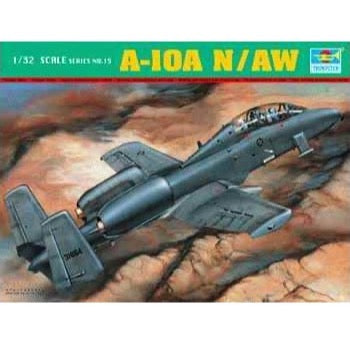
Trumpeter 02215 1/32 US A-10A N/AW
71.00
$
<p>Fairchild-Republic delivered one of the two-seat Night/Adverse Weather (N/AW)A-10 modification to Edwards AFB for flight tests in 1979, The N/AW was 2000 pounds heavier than the single-seat version. Although the N/AW proved very capable but the U.S Air Force was not interested and committed to other aircraft. </p>




